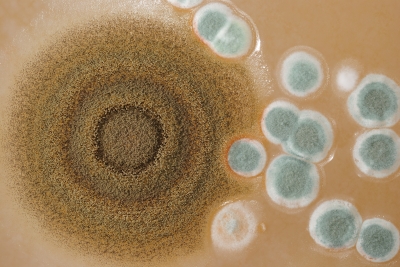Got a water leak? How long till mold growth starts?
Image: FreeDigitalPhotos.net
A lot of people ask us how long it takes mold to grow after a recent water incident; this is the most common question that arises in a persons mind after a leak.
I am preparing this information for home owners, realtors, and future potential clients who are looking for a mold specialist to answer such questions.
If you have the water extracted and the moisture properly dried out by professional remediators or carpet drying specialists in the first 24 to 48 hours after a leak you may likely be ok. It takes mold a 24 to 48 hours to start to grow under ideal conditions. As you know carpets get moldy very quick, many older carpets with dirt as a food source start smelling moldy after being wet just a short time. The above refers to small amounts of mold growth, and the mold may only be at the microscopic levels after a few days. It may be a week or two before it grows to the extent that it is visible to the naked eye as spots on drywall or carpet pads. Of course, mold being a living organism with it’s own agenda is not going to follow what I say in this blog and thus their will be exceptions.
Proper Drying is Important
What is most important is how fast and how well the flooded areas are dried. Many times a person will think that moisture was removed when in fact enough moisture was left behind to allow mold to start growing. If a minor amount of moisture is lingering inside the wall cavities, behind the baseboards, in the carpet, or under the carpet padding it will likely be weeks before it all dries up, by that time the mold starts forming as visible sports on your walls. Many mold remediators and carpet cleaning companies will focus efforts on drying the room that flooded and neglect nearby rooms where water flowed hidden inside wall cavities and under carpet or even tile. Before you realize that dry out was not done properly you may have white, green, or black mold spots showing up; you may also detect mold odors and you will likely have mold capable of causing allergy or asthma reactions in persons who are prone to such reactions.
How to Properly Dry Out a Property
Proper drying often involves discarding wet carpets and carpet pads because they trap moisture and hamper drying. If the flood was extensive, it may be helpful to remove the baseboards because these baseboards can trap water and prevent proper drying; in more extreme case a few holes can be cut in the walls to allow wet air to escape and dry air to enter the wall cavities. The use of wet vacs to remove standing water, fans to move air, and dehumidifiers to dry the air are helpful. Without dehumidifiers to dry the air you are simply moving wet air with fans and this is of little or no benefit. If you can dry your air with dehumidifiers and maintain humidity levels between 30%RH and 50%RH it will help everything else in the area dry faster. Please be advised that I am not a remediator, we at A Accredited Mold Inspection Service, Inc. provide inspections and written reports on mold and moisture problems for you, your attorney, your buyer, or your insurance adjuster. For more info on proper drying consult with a specialist in remediation or carpet drying etc.
About Mold Inspections
It is best to have a mold inspection done by a mold specialist prior to doing any work like removing moldy drywall. A mold specialist can try and determine the extent of possible mold spread and what needs to be done prior to remediation. If more that a very small problem exists it is recommended that a mold removal specialist be called.
We have no conflict of interest and inspect only. We do not do mold removal nor do we provide drying services. The fee is $300.00 to $1000.00 for a mold inspection, depending on the size of the home and number and type of test to be performed. An inspection will also include moisture testing, and a detailed inspection and written report. In cases where mold may be hidden behind walls it is almost always very important to have some samples taken from inside walls to determine if hidden mold is in your walls. If an inspector tells you they will take one or two indoor samples from the center of a few rooms your best course of action may be to keep calling inspectors until you find one who knows to take samples from inside walls when hidden mold from water intrusion is suspected.

